Life on the Fishing Line
HOOKED UP
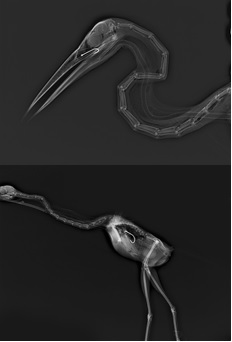
In the months of October & November, the Rescue Centre received nine similar cases of nine birds with nine hooks. The birds were, not surprisingly, all waterbirds, a mix of Great Cormorants, Grey Herons, Chinese Pond Herons & Black Crowned Night Herons and all were found in the vicinity of commercial fish ponds close to the Mai Po Marshes Nature Reserve.
X-rays were taken revealing the location of the ingested hooks. Some were found in the mouth and neck regions, whilst others had travelled deep into the stomach, all causing great discomfort to the birds.
OFF THE HOOK
All nine hooks in the nine birds were successfully removed. A slow reintroduction to food began post-surgery allowing time for internal wounds to recover. Hydration fluids and meals of blended fish were prepared as well as a daily cocktail of antibiotics and pain relievers.
Sadly, four of the nine birds eventually died as a result of their injuries. Five birds made a full recovery and were released back to the wild with a small prayer that they would never again encounter the same fate.
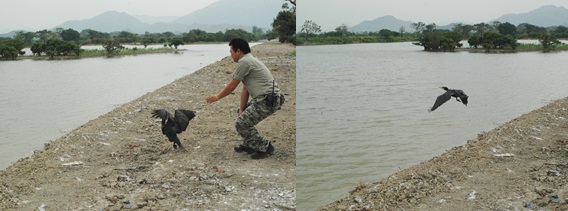
2011 saw a 10-fold increase in the number of cases of birds with ingested hook received at the Rescue Centre. Combined with reports of birds seen with fishing lines protruding from their mouths, hanging tangled in trees or found foul hooked and freed, the figure likely represents but a tiny proportion of the actual number of birds affected each year.

BIRDS IN TROUBLE
These unfortunate cases were neither accidental nor uncommon. Birds are lured by baited hooks suspended near the edge of the fishing ponds or by unattended dangling hooked lines (invisible to birds), snagging birds as they search for food. Entangled birds often remain unnoticed or ignored, their fates almost certainly result in death due to starvation and predation for those unable to free themselves. For the fortunate few that do, damage and infection caused by barbed hooks as they travel through the body.
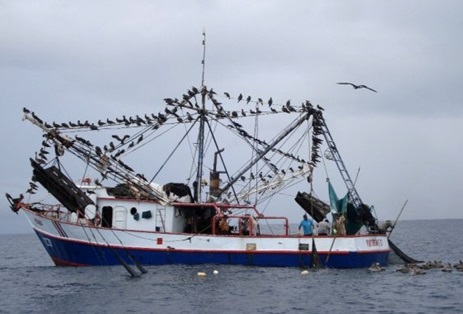
A fish hook can kill a bird right away as it is swallowed, causing suffocation and internal bleeding. However, in most cases, birds die very slowly from painful and lingering infections. The victims are usually seabirds (e.g., albatross, gulls, pelicans) or waders (e.g., egrets, herons), who feed at sea or along shorelines and edges of ponds.
Worldwide, long-line fisheries are the major contributor to death of seabirds. Long lines of hooked hanging bait dropped into the ocean by fishing fleets look like an easy meal to seabirds. Attracted by the bait they have no idea they are facing a painful death or more commonly the certain risk of being dragged down and drowned.
It is believed that over 320,000 seabirds, a staggering number, are killed each year from commercial fishing as by-catch (i.e., untargeted catch in a fishery), according to the research presented to a World Conference on Marine Biodiversity in 2011 (Anderson O.R.J et al. 2011). The serious problem of by-catch has even threatened a few species of albatross with extinction.
OTHER INVISIBLE KILLERS

The illegal use of 'ghost nets' to drown birds in aquaculture ponds has come to our attention. Fishermen are known to use submerged large-meshed nets in fish ponds to capture birds, which are regarded as nuisance as they feed on the cultivated fish. Diving birds such as Great Cormorants are at great risk of being caught by such nets.
A PROBLEM WITH SOLUTIONS?
In relation to the problem of hooked birds in HK, the importance of aquaculture pond management must not be understated.
There are numerous bird friendly methods that can be implemented to deter birds from landing, roosting, feeding on or near fishery ponds, the following are just a few examples.
- Total exclusion of the facility, i.e., fence or wall in the facility.
- Relocation of aquaculture facilities to areas where predatory bird species do not congregate or occur.\n
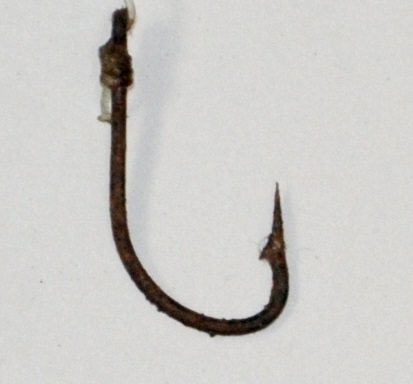
- Physical deterrents such as appropriately spaced overhead wires and lines across ponds and rotating water jet sprays set-up in the middle of a pond can deter birds from landing on ponds.
- Visual deterrents such tapes and balloons can be installed around pond perimeters.
- Research suggests that the adoption of Circle-Hooks to replace the traditional J-Hooks could possibly reduce by-catch and prevent severe injuries even if the hook is swallowed (Hata 2006).
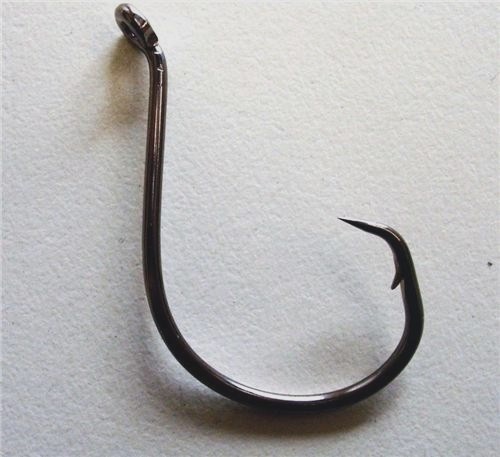 (Above) The traditionally used J-hook in fishing;
(Above) The traditionally used J-hook in fishing;
(Below) Circle-hook designed to reduce by-catch. - Line weighting is another proposed solution (Hata 2006). Through adding weights to the fishing line, the baited lines would sink efficiently to the right depth for fishing instead of catching birds.
SMALL ACTIONS, BIG DIFFERENCE
If you are a recreational fisherman, you can save lives by not leaving baited fish hooks hanging unattended. Also, fish away from bird feeding and nesting sites, and when disposing of fishing line, cut it into small pieces and place it in the bin.
If you see a hooked bird, do not cut the line. Contact the KFBG Rescue Centre (tel: 2483 7136 / 6713 9881) or Agriculture, Fisheries and Conservation Department (hotline: 1823) for help.
References
Anderson, O.R.J., Small C.J., Croxall, J.P., Dunn E.K., Sullivan B.J., Yates O and Black A. 2011. Global seabird bycatch in longline fisheries. Endangered Species Research 14: 91-106.
Hata, D.N. 2006. Incidental captures of seabirds in the US Atlantic pelagic longline fishery, 1986-2005. Report to NOAA Fisheries, Southeast Fisheries Science Center, Protected Resources and Biodiversity Division, Miami, FL; And part of US’s National Report to ICCAT, 2006.

